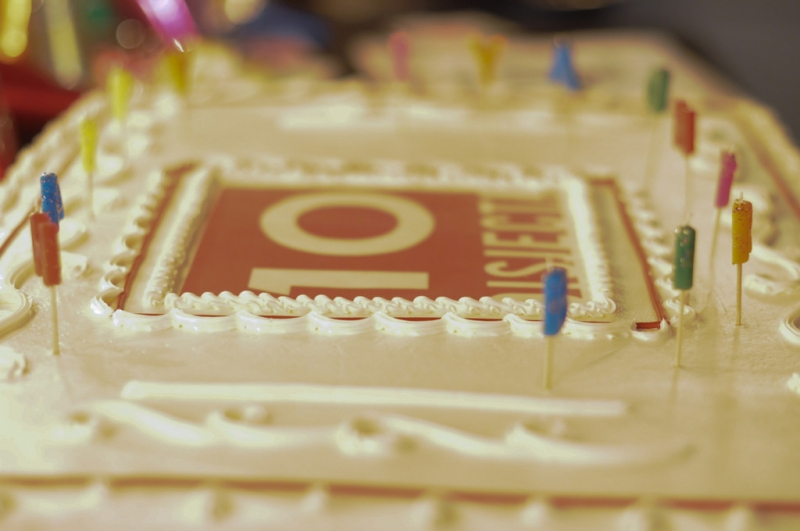There is typically a sense of finality when an artist’s work is displayed on a gallery’s walls. It’s all about showcasing the finished product, and as a result, the viewer is usually unaware of the creative process that went into each piece. Gallery owner Byran Suereth would rather put the focus on an artist’s disjecta — the fragments and revisions that eventually form a final piece. So when Suereth formed his gallery in 2000, he thought Disjecta would be a fitting namesake. “Disjecta was an interesting name, and it also had a connotation for what we do as an arts institution,” Suereth says.

As Suereth started Disjecta, Portland’s burgeoning art scene consisted primarily of artists and collectives that operated informally out of warehouses. It was his peers’ DIY approach and the city’s creative energy that sparked his idea to create a gallery of his own. “For the first two years of Disjecta, we really fed off of that spirit,” Suereth says. “I wanted the ability to create and to give people in the space the ability to create.”
Over the past decade, Disjecta has inhabited a number of spaces, including a vacated Masonic lodge and a former bowling alley — the gallery’s current home. Suereth has a tendency to seek out and rehab run-down buildings with unique architectural qualities that complement the gallery’s DIY ethos. “We are always on the frontier; we’re pioneering new neighborhoods,” he says. “That’s what I think arts organizations are best at, finding things that people don’t realize are valuable or attractive spaces and turning those into very viable centers for art.”
Disjecta’s current space features a 26-foot beveled ceiling, which Suereth describes as “like an inverted ship hull.” The sprawling space accompanies the site-specific installations and performances that are produced by the local, national, and international artists that Disjecta collaborates with.

In February, Disjecta is featuring Life? or Theater?, an exhibit on the life and work of Charlotte Salomon. Salomon is a Jewish artist who is often credited with creating one of the precursors to the graphic novel while she was in hiding in the South of France during World War II. The Portland-based Jewish Theater Collaborative will accompany the exhibit with a performance.
Though a number of galleries offer the traditional artist-in-residence program, Disjecta has created a variation that showcases the talents of Portland’s up-and-coming curators. This winter, sculptor Jenene Nagy will kick off her curatorial show that features large-scale installation artist Karl Burkheimer’s work. The program offers emerging curators the ability to establish their niche in Portland’s contemporary art scene. “It’s a very exciting program for Portland because there really aren’t opportunities for curators to establish their formal views on art,” Suereth says.

As Disjecta has come of age, so has Portland’s art scene. Over the past 10 years, the city’s creative community has transcended from a scrappy DIY scene into a nationally recognized cultural hub that has stayed true to its roots. This transformation was made possible in part by the city’s tight-knit gallery scene. “At Disjecta, we sought to provide more in-depth services and a more polished presence for artists to show the DIY spirit,” Suereth says. “So now you have a more sophisticated team of artists that are aware of what it takes to succeed on a national stage.”

